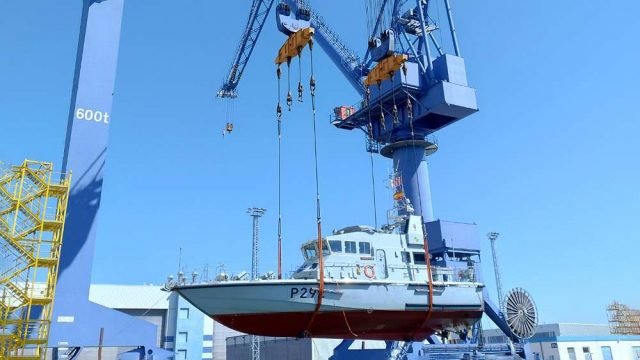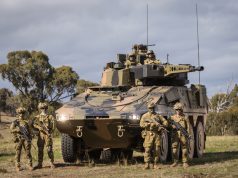The Bundeswehr-operated Naval Arsenal Warnowwerft successfully restored two British Royal Navy patrol boats in mid-May, showcasing the advantage of its Baltic Sea location for allied forces.
Royal Navy vessels HMS “Trumpeter” and HMS “Charger” arrived in Rostock on May 10, where they underwent essential underwater hull maintenance and repairs.
After being hoisted for inspection of their underwater hull, the boats underwent thorough maintenance and repair process, resulting in their complete restoration to full operational capacity within one week.
The shipyard, now under federal government control, belongs to the German Armed Forces’ naval arsenal, including locations in Wilhelmshaven, Kiel, and Rostock. With the addition of the Rostock facility, the Bundeswehr said its self-repair capabilities and defense potential improved for both national and alliance defense.
“Trumpeter” and “Charger” are part of a fleet comprising six boats that are presently engaged in a training voyage across the Baltic Sea, poised to participate in the upcoming NATO maneuver, BALTOPS, in June.
Furthermore, they are scheduled to visit the Kiel-Wik base as guests during Kiel Week.
“Our employees at the Warnow shipyard in Rostock already demonstrated their efficiency with the timely completion of the repair of the fleet service boat ‘Alster’,” says Rainer Sacher, Managing Director of the Naval Arsenal.
“Now they were able to do the same when repairing the two Royal Navy patrol boats. In addition to the German Navy, we also support our allies in the Baltic Sea with important work,” he added.
The British Navy currently operates a fleet of 16 patrol boats known as the Archer class, primarily utilized as “fast training boats” due to their ability to navigate through ports and narrow waterways inaccessible to larger warships.
These vessels excel at executing diverse missions, including safeguarding British strategic nuclear submarines during port operations, monitoring maritime security in straits, and facilitating practical training for junior officers.



























